Fix: (0xC19001-0x40021) Error While Upgrading to Windows 11
Some Windows users are unable to upgrade to Windows 11 regardless of the route they take – attempting to use the update assistant or installing the Windows 11 update results in the same 0xC19001-0x40021 error code as the installation fails.
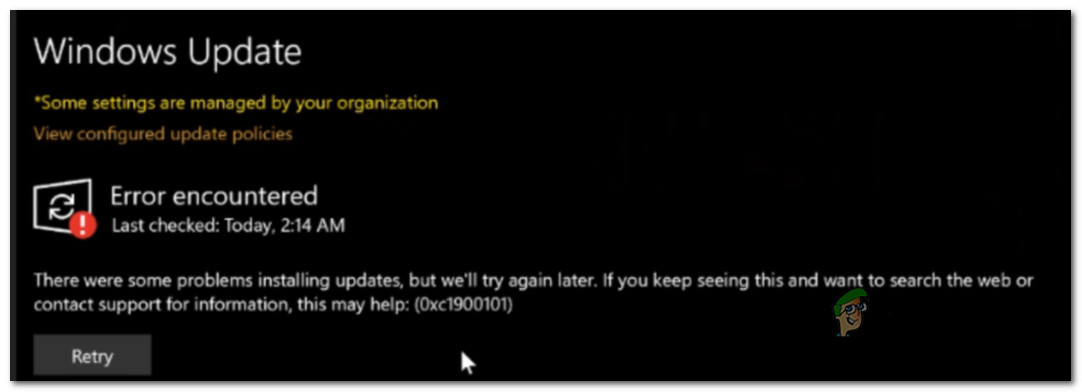
After investigating this issue thoroughly, we discovered a few commons scenarios that might be responsible for triggering this error in the middle of upgrading to Windows 11. Here’s a list of culprits that you might want to troubleshoot against:
- PC is not compatible with Windows 11 – If you’re using the Windows 11 Upgrading assistant when seeing this error code, it could be a sign that your current hardware is not actually compatible with Windows 11. You can double-check this by using the PC Health Check app.
- Generic WU issue – If you get this error while attempting to upgrade to Windows 11 using an update that arrived via Windows Update, you might be dealing with a generic glitch that your operating system is smart enough to fix automatically. Try running the Windows Update Troubleshooter and applying the recommended fix.
- Windows Update Glitch – It’s not uncommon for updates like this to fail due to a glitch affecting one or more service or folder dependencies used by WU. If this scenario is applicable, you should be able to fix the issue by using an elevated CMD prompt to reset every Windows Component and ignore the current Catroot 2 and SoftwareDistribution folders.
- System File Corruption – In more serious circumstances, you can expect to see this error occurring when you’re actually dealing with some kind of system file corruption or storage sector corruption that cannot be resolved conventionally. In this case, you should run SFC, DISM, and CHKDSK scans in quick succession and see if you can salvage anything.
- Windows 11 insider build is not compatible with an upgrade – Keep in mind that there are certain Windows 10 builds that are not compatible with the update responsible for upgrading to Windows 11. In order to get around this issue, you’ll want to downgrade your current Windows 10 build first before retrying the upgrade.
- Conflict with the ASUS Xonar driver – ASUS users might also expect to face this error code while attempting to upgrade to Windows 11 while having the Xonar Driver installed. There is no official explanation on why this sound driver causes the installation to crash, but it’s confirmed to happen by multiple user reports. You can get around this issue by uninstalling the Asus Xonar Driver first.
- Interference caused by a DRM module – If you have previously installed a legacy game that is using the Aladdin Knowledge Systems DRM, there’s a big chance this is conflicting with the Upgrade Assistant tool. To prevent the conflict from occurring, you will need to use the Registry Editor to effectively disable the legacy DRM module.
- 3rd party antivirus interference – So far, the most commonly reported 3rd party antivirus for causing this error is Zone Alarm. But there might be other similar AV suites causing the same behavior. In most cases, you should fix the interference by disabling the real-time protection or by uninstalling the conflicting tool altogether.
- Secondary SSD is connected – If you’re using two different SSDs (external or internal), you might want to disconnect the second one before trying to install the Windows 11 update again. Again, no explanation on why this works, but there are users speculating that a dual-boot SSD configuration might spawn an MBR data conflict.
Now that you are aware of every potential cause that might end up triggering the 0xC19001-0x40021 error, here’s a list of methods that other users finding themselves in a similar scenario have successfully used to bypass it and upgrade to Windows 11 with no issues.
Check if the hardware is compatible with Windows 11
Since segmentation is a big issue with Windows 11 right now, the first thing you need to check is if your system is truly capable of Windows 11 or not.
Microsoft surprised a lot of people by making TPM 2.0 and Secure boot a requirement for Windows 11 – along with a few other hardware requirements that are easier to meet.
Fortunately, in case you’re not certain if your PC configuration is compatible with Windows 11 or not, you can run a Microsoft app called PC Health Check to see if your computer meets the minimum requirements to run Windows 11.
Note: This app was initially pulled after showing false negatives with certain configurations, but now Microsoft has patched it and it’s ready to be used.
In case you haven’t done this yet, follow the instructions below to start this troubleshooting guide by checking if your PC meets the minimum Windows 11 requirements:
- Open your default browser and download the latest version of the PC Health Check app.
- Once the installer has been successfully downloaded, double-click on it and hit Yes when asked by the User Account Control Prompt to grant the required admin access.
- At the initial installation screen, follow the on-screen prompts and click Install to get the utility installed on your PC.
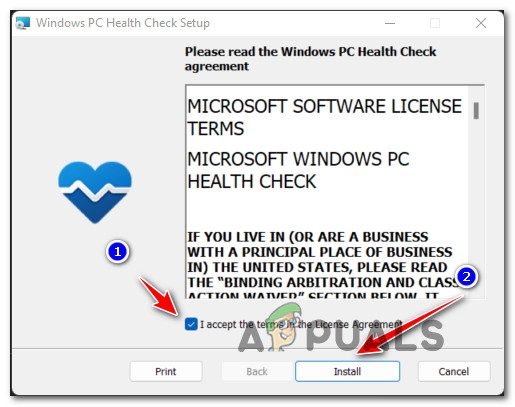
Install the Health Check Utility Note: In order for the install button to become available, you will need to accept the License Agreement first.
- After the installation is complete check the box associated with Open Windows PC Health Check and click on Finish to launch it.
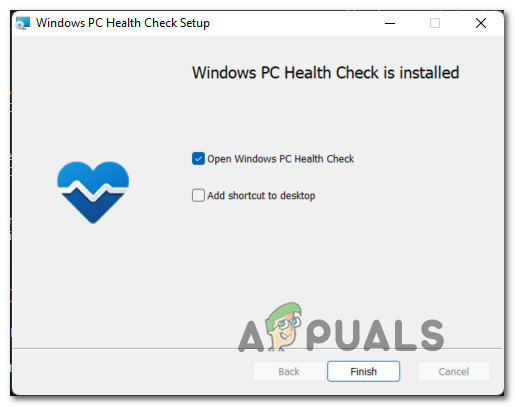
Running the PC Health Check utility - Once you’re inside the PC Health Check app, click on the Check Now button at the top of the screen.

Checking if Windows 11 is compatible - Wait until the results are generated, then click on See all results from the pop-up menu that just appeared.

See all results for Windows 11 - Next, check the results. If the pop-up says ‘This PC meets Windows 11 requirements‘ at the top, you are good to go.
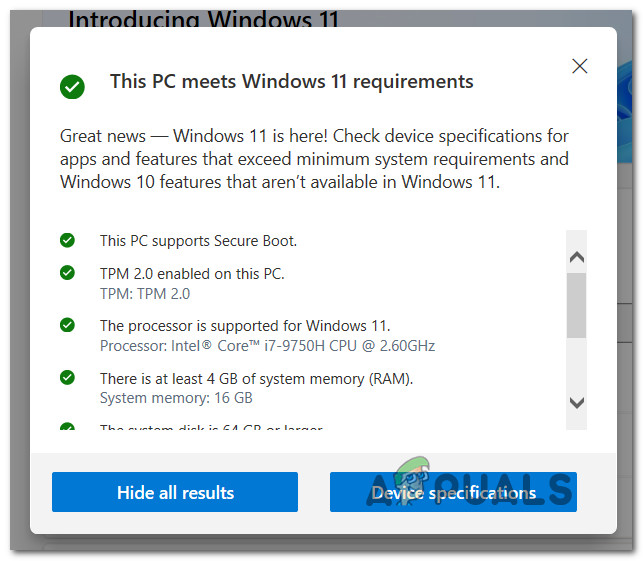
PC meets minimum requirements Note: On the other hand, if the pop-up says that your computer is not compatible, that’s probably the reason why you’re seeing the 0xC19001-0x40021 error.
After you’re done with this tool and you know if your PC is compatible or not with Windows 11, you can uninstall the PC Health Checker tool via Program and Features.
Once you’ve ruled out a potential software or hardware incompatibility from your culprit’s list, move down to the next method below.
Run the Windows Update Troubleshooter
Now that you’ve confirmed that your PC is fully compatible with Windows 11, the next thing you should do is ensure that you’re not actually dealing with a corrupted Windows Update component that might be preventing the upgrade to Windows 11 from taking place.
Since there are multiple potential causes that might hinder the functionality of Windows Update, the best course of action would be to run the Windows Update Troubleshooter and see if it detects any issues that might affect the installation of a new pending update – in this case the update that upgrades your OS to Windows 11.
Note: Windows Update Troubleshooter contains a selection of automated repair strategies that will be applied automatically if the troubleshooter discovers a scenario that is applicable to one of the repair schemes included.
Follow the instructions below to run the Windows Update Troubleshooter:
- Press Windows key + R to open up a Run dialog box. Next, type ‘ms-settings:troubleshoot’ inside the text box, then press Enter to open up the Troubleshoot tab of the Settings app.
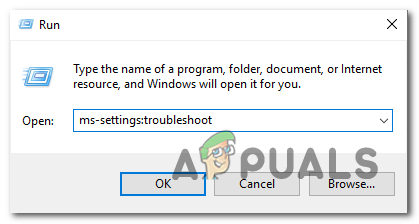
Opening up the Troubleshoot tab - Once you’ve made your way inside the Troubleshooting tab, scroll down to the Get up and running tab, then click on Windows Update from the list of available options.
- Next, from the context menu that just appeared, click on Run the Troubleshooter button.

Runnin the Windows Update troubleshooter - Once you’re inside the first screen of the Windows Update troubleshooter, wait until the initial scan is complete.
- If an issue is discovered that can be fixed by one of the repair strategies included, you will be given the option to click on Apply this fix.
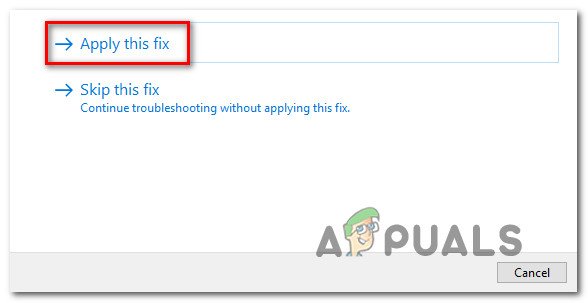
Applying the recommended fix Note: Depending on the fix that gets recommended, you might be asked to perform a series of manual steps yourself.
- After the recommended fix is successfully applied, reboot your PC and attempt to upgrade to Windows 11 again.
If this new upgrade attempt fails with the same 0xC19001-0x40021 or the Windows Update Troubleshooter was not able to find an underlying WU component issue, move down to the next method below just to be sure.
Reset every WU component
Even if the Windows Update Troubleshooter was not able to find an underlying issue with the Windows Update component, that doesn’t mean there’s isn’t a corruption issue affecting this component.
This is why we recommend that you take the time to reset every WU sub-component and every associated dependency on top of clearing the Catroot 2 and SoftwareDistribution folders in order to ensure that you’re not actually dealing with a corruption issue.
To do this, you will need to run a series of commands in a specific order. These commands will ensure that you first stop every involved service before forcing WU to ignore the current folders where update files are stored.
Follow the guide below for step by step instructions on how to do this:
- Open up a Run dialog box by pressing Windows key + R. Once you’re inside the run box, type ‘cmd’ inside the text box, then press Ctrl + Shift + Enter to open up an elevated Command Prompt.

Opening up an elevated CMD prompt - Once you’re prompted by the User Account Control window, click Yes to grant admin access.
- As soon as you’re inside the elevated CMD prompt, type the following commands in order and press Enter after each command to effectively reset the entire WU component:
net stop wuauserv net stop cryptSvc net stop bits net stop msiserver ren C:\Windows\SoftwareDistribution SoftwareDistribution.old ren C:\Windows\System32\catroot2 catroot2.old net start wuauserv net start cryptSvc net start bits net start msiserver
- After every command is run successfully, close the elevated command prompt and reboot your computer before attempting to upgrade to Windows 11 once again.
If the upgrading attempt still results in the same 0xC19001-0x40021 error, move down to the next potential fix below.
Run SFC, DISM, and CHKDSK Scans
In case you already tried resetting the Windows Update component and you’re still dealing with the same kind of error, you should at least assume that you might be dealing with some kind of system file corruption issue.
In this case, you should make use of every available utility at your disposal to try and replace the corrupted files that are preventing the upgrade to Windows 11 and causing the 0xC19001-0x40021 error.
Our recommendation is to run SFC (System File Checker), DISM (Deployment Image Servicing and Management), and CHDSK (Check Disk) scans utility in quick succession to replace corrupted system files with healthy equivalents and replace failing storage sectors with unused equivalents.
For the complete instructions on doing this, follow the guide below:
- Open up a Run dialog box by pressing Windows key + R. Inside the Run box, type ‘cmd’ and press Ctrl + Shift + Enter to open up a Command Prompt with admin access.

Opening up an elevated CMD prompt - Once you’re prompted by the User Account Control, click Yes to grant admin access.
- Inside the elevated CMD prompt, type the following command and press Enter to initiate an SFC scan:
sfc /scannow
Note: System File Checker is a 100% local tool that won’t require access to the internet. It works by using a locally cached archive with backup system files – it will swap any corrupted file it finds with a healthy equivalent.

System File Checker scan - After the SFC scan is finished (regardless of the results), go ahead and initiate a DISM scan from the same elevated CMD window:
DISM /Online /Cleanup-Image /RestoreHealth
Note: DISM is a more modern tool that will require you to have stable access to the Internet. This is required because DISM will use a sub-component of WU to download healthy equivalents for the corrupted files that need to be replaced.

DISM scan - Finally, once the DISM scan is complete, go for the final scan (CHKDSK) from the same elevated CMD window by running the final command below and hitting Enter:
CHKNTFS C:
Note: Keep in mind that in your case, C: might not be the OS drive. If your OS drive is different, change it to the correct one.

Chkdsk Scan - Once the third scan is complete, reboot your PC and attempt the upgrade to Windows 11 again to see if the problem is now fixed.
Downgrading to an older Windows 10 build (if applicable)
If none of the methods below have worked in your case, one thing you can also try is to downgrade your current version of Windows 10 version to an older build first before re-trying the upgrade to Windows 11.
As some affected users have been reporting, you can expect to face this issue in a situation where you’re still on an Insider build of Windows 10 where the upgrade is not possible.
In this case, downgrading your Windows 11 version to a build released prior to March 20 should ensure that you can upgrade easily without seeing the same 0xC19001-0x40021 error.
Follow the instructions below for the complete guide of downgrading to an older Windows 10 build before re-initiating the upgrade to Windows 11:
- Open your default browser and visit the ADGuard.net download page here.
- Once you’re inside, select Windows (final) at the first prompt, then choose Windows 10, Version 2009 – 20H2 (build 19042.508) as the OS version.
- Finally, select Windows 10 under Select Language, then finally choose one of the two OS architecture versions depending on which one you’re currently using.
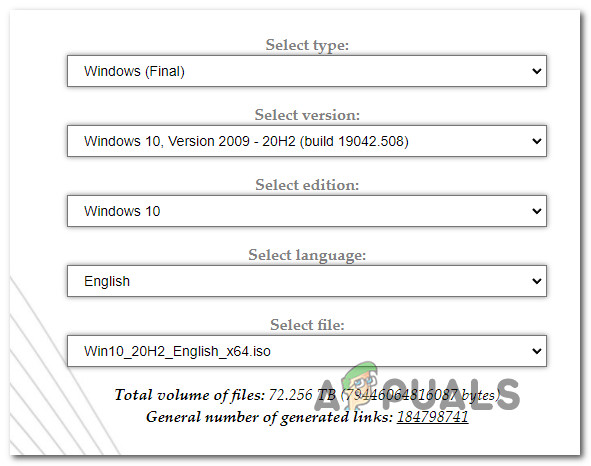
Select which Windows OS version to downgrade Note: You can find out your current OS architecture by right-clicking on This PC (inside File Explorer) and choosing Properties. Inside, look under System > System Type to figure out if you’re using a 32-bit or 64-bit OS.

Checking out which operating system you’re using - Finally, click on the red Download button that just appeared and wait until the downgrade ISo is downloaded locally.
- Once the downgrade ISO is finally downloaded locally, mount it, then follow the on-screen instructions to downgrade your current Windows 10 version to an older one, then repeat your attempt to install the Windows 11 update and see if the error is avoided.
In case the upgrade attempt gets interrupted by the same 0xc1900101-0x40021 error, move down to the next method below.
Uninstall Asus Xonar Driver prior to upgrading (if applicable)
If you’re using ASUS hardware, you should know that there is one drive that’s known to conflict with the upgrading process to Windows 11.
It’s called ASUS Xonar Driver and a lot of users are blaming it for causing an interference with the Windows Update Assistant resulting in the error-0xc1900101-0x40021.
In case you find this scenario to be applicable, you can resolve the interference by using Device Manager to uninstall every driver related to ASUS Xonar. This method is confirmed to work by a lot of Windows 10 users that we’re encountering this issue while using ASUS hardware.
Follow the steps below for complete instructions on uninstalling the ASUS Xonar driver in order to allow the upgrade to Windows 11 to take place:
- Press Windows key + R to open up a Run dialog box. Inside, type ‘devmgmt.msc’ and press Enter to open up Device Manager.

Opening up Device Manager - When you’re prompted by the User Account Control, click Yes to grant admin access.
- Once you’re inside Device Manager, expand the drop-down menu associated with Audio inputs and outputs, then right-click and Uninstall device every driver that mentions ASUS Xonar.
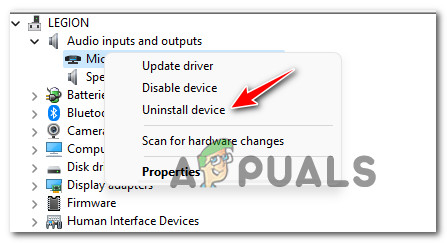
Uninstall the device Note: If you haven’t done this already, make sure that hidden drivers are shown too by clicking on View (from the ribbon bar at the top), then clicking on Show Hidden Devices.

Ensure that hidden folders are shown - At the confirmation prompt, click Yes to confirm the uninstallation of the ASUS Xonar driver.
- After the driver is uninstalled DO NOT reboot your PC as Microsoft will likely reinstall the same driver again. Instead, attempt o install the failing update once again and see if the issue is now fixed.
In case the problem is still not resolved, move down to the next method below.
Disable DRM software that interferes with the Win 11 upgrade (if applicable)
Another scenario that we’ve discovered as a potential culprit for triggering the 0xc1900101 error during a Windows 11 upgrade attempt is an interfering piece of DRM software called Aladdin Knowledge Systems.
If you have this installed, you should know that this is a legacy program that is in no way relevant since the parent company was acquired by SafeNet in 2009.
You might find this digital rights management (DRM) module with certain legacy games, but since you really don’t need it anymore (and since it interferes with Windows 11’s upgrade assistant tool), you can use Registry Editor to ensure that this DRM module remains disabled.
If this scenario is applicable, follow the instructions below to navigate to the Reg key belonging to Aladdin Knowledge Systems and disable the DRM functionality in order to fix the 0xc1900101 0x40021 error.
Here’s what you need to do:
- Press Windows key + R to open up a Run dialog box. Next, type ‘regedit’ inside the text box and hit Ctrl + Shift +Enter to open up the Registry Editor with admin access.

Opening up the Regedit tab - At the User Account Control prompt, click Yes to grant admin access.
- Inside the Registry Editor, use the menu on the left to navigate to the following location:
HKLM\System\CurrentControlSet\Services\aksfridge
Note: You can either navigate to this location manually or you can paste the full location directly into the navigation bar and press Enter to get there instantly.
- Once you’re inside the correct location, move over to the right-hand section and look for the Start entry.
- Once you find the Start key associated with Aladdin Knowledge Systems, double-click on it, then set the Base to Hexadecimal and the Value data to 4.

Modify the value data of Start - Once the operation is enforced, click Ok to save the changes, then close the Registry Editor and reboot your PC to enforce the registry changes.
- After your Windows 10 computer boots back up, attempt to perform the Windows 11 once again and see if the error is now resolved.
Disable Antivirus Temporarily (if applicable)
As it turns out, another likely culprit that causes this problem is an interfering 3rd party software that denies some permissions to the Windows 11 setup upgrade. This problem is typically reported to occur with Zone Alarm, but there might be other 3rd party antivirus suites that will cause similar behavior.
If you’re using a 3rd party AV, it wouldn’t hurt to temporarily disable the real-time protection of your AV and check if the Windows 11 upgrade is successful while the security suite is disabled.
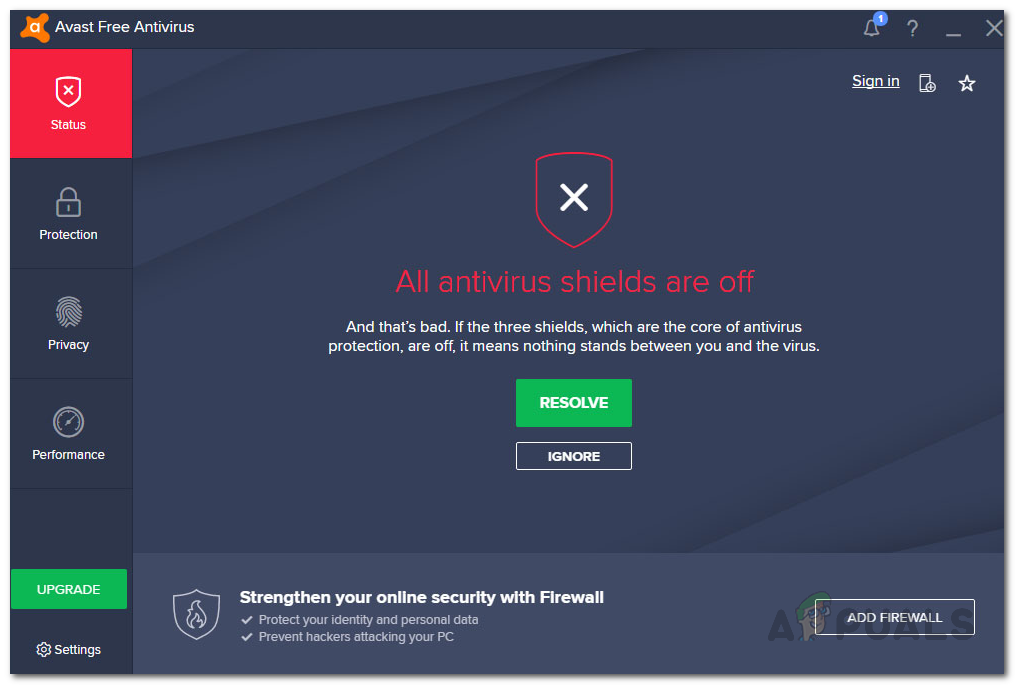
Note: Most AV suites will allow you to disable the real-time protection directly via the taskbar icon. If that’s not possible, you should be able to find an option to disable the currently active AV shields from the Settings menu.
Additionally, you can also consider uninstalling the 3rd party suite altogether – particularly if you’re using an AV suite that also doubles down as a firewall.
In case this method is not applicable, move down to the next potential fix below.
Remove secondary SSD and any external devices (if applicable)
Keep in mind that it’s not uncommon to face the 0xc1900101 error while attempting to upgrade to Windows 11 while certain external SSDs are connected.
There is no official explanation on why this happens, but we found at least a dozen different reports where affected users said that the Windows 11 update was finally installed after they made sure to remove any external SSD, HDD, along with any other non-essential peripherals.
If this scenario is applicable, simply disconnect any unessential device from your USB ports.
Additionally, if you’re using a secondary drive (where Windows doesn’t have any system files installed on), disconnect that drive too by removing the case and disconnecting the power cable to it.

After you disconnect every non-essential device from your PC, retry the upgrade operation and see if you manage to bypass the 0xc1900101 error.
If none of the methods shown above worked for you at all you can try to bypass Windows 11 system requirements and Install Windows 11.




